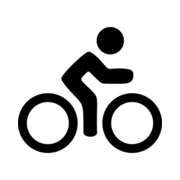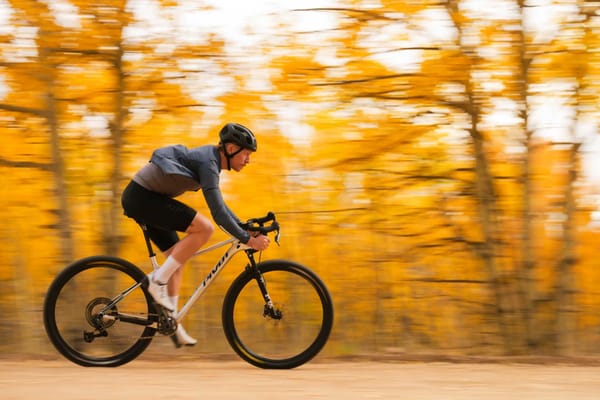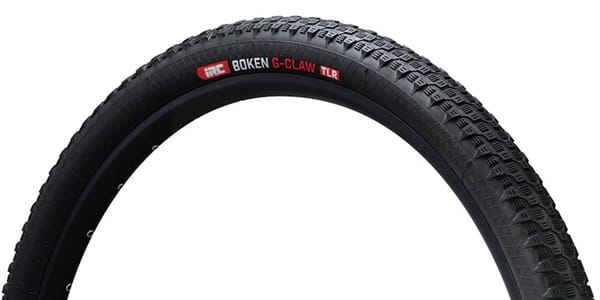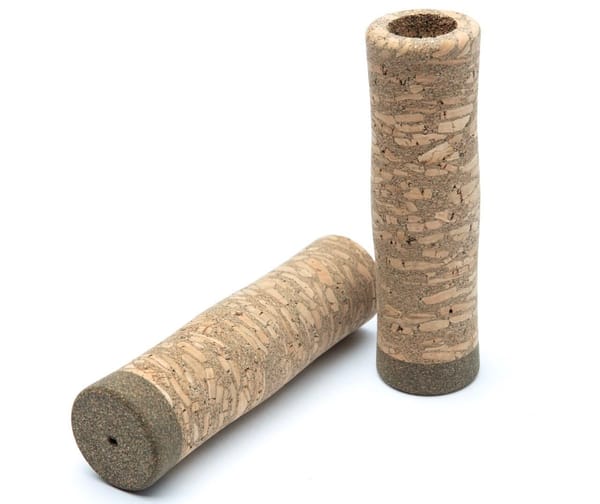Weekly Briefing - Tour de France Heats Up, New Gravel Tech, and Training Smarter (Not Harder)
This week in cycling: The Tour de France enters its decisive second week, Pinarello and Shimano drop major new gravel gear, and we explore new research on personality-based training and the truth about "big gear" workouts.
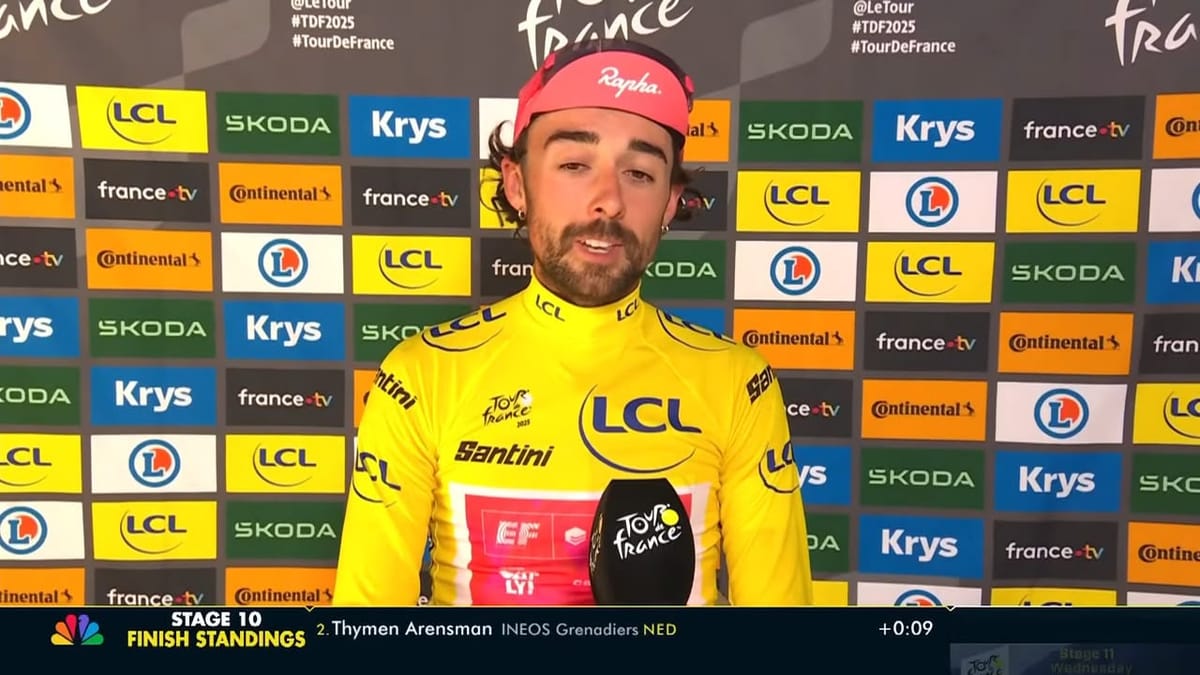
This week, the Tour de France delivered a Bastille Day bombshell that rewrote the General Classification, while the tech world unleashed a torrent of game-changing gear that signals a new era for gravel cycling. We delve into the science that debunks long-held training myths and refines our understanding of nutrition, from advanced hydration strategies to the surprising power of creatine. This is your authoritative guide to everything that mattered in the world of cycling this week.
The Big Story – Anarchy at the Tour: A Week of Raids, Sprints, and a Bastille Day Bombshell
The second week of the 2025 Tour de France was a masterclass in tactical warfare, attrition, and explosive drama. What began with the apparent consolidation of power under Tadej Pogačar ended with a historic upset on Bastille Day, revealing cracks in team fortresses and proving that in a three-week race, opportunity can arise from the chaos of the GC stalemate.
Stage 7: Pogačar's Brittany Raid
On Friday, July 11, Tadej Pogačar (UAE Team Emirates) fired a major warning shot on the punishing slopes of the Mûr-de-Bretagne. After 197 kilometers of racing from Saint-Malo, he unleashed a powerful sprint to distance Jonas Vingegaard (Visma-Lease a Bike) and claim his second stage win of the race and his 19th career Tour victory. The victory was decisive enough to wrestle the yellow jersey from the shoulders of Mathieu van der Poel, who lost over a minute. While Remco Evenepoel (Soudal–QuickStep) finished with the lead group, the day underscored Pogačar's lethal finishing kick. However, the stage also planted a seed of future trouble for UAE Team Emirates; key lieutenant João Almeida suffered a high-speed crash, finishing over 10 minutes down with what was later diagnosed as a fractured rib.
Stage 8 & 9: The Sprinters' Domain and a Fortress Crumbles
The weekend offered two flat stages, seemingly a respite for the GC contenders but proving pivotal in other ways. On Saturday's Stage 8 to Laval Espace Mayenne, Jonathan Milan (Lidl–Trek) ended a six-year drought for Italian riders at the Tour, taking a dominant victory in a powerful uphill sprint. Guided perfectly by his team, he held off Kaden Groves and Wout van Aert, while Pogačar finished safely in the bunch to retain yellow.
Sunday's Stage 9 to Châteauroux was a chaotic, high-speed affair. After the breakaway was caught just 700 meters from the line, Tim Merlier (Soudal–QuickStep) navigated a messy finale to secure his second stage win of the Tour, narrowly eclipsing a charging Jonathan Milan. The major story for the overall classification, however, happened off the front. João Almeida, suffering from his Stage 7 injuries, was forced to abandon the race. The loss of a critical mountain domestique of his caliber was a devastating blow to UAE Team Emirates, leaving Pogačar visibly more isolated and vulnerable ahead of the high mountains.
Stage 10: A Bastille Day Bombshell
The first true mountain stage of the Tour, a 165.3 km trek to Le Mont-Dore Puy de Sancy on Bastille Day, delivered one of the most memorable days of recent Tour history. With the GC favorites marking each other into a tactical deadlock, a powerful breakaway was allowed to build an insurmountable lead.
The stage victory was masterfully taken by Simon Yates (Jayco AlUla), who attacked his breakaway companions on the steep final climb. But the story of the day belonged to Ireland's Ben Healy (EF Education-EasyPost). Having done a monstrous amount of work to drive the breakaway, Healy finished third on the stage, 30 seconds behind Yates. It was enough. Having started the day 3:55 down on GC, he overturned the standings to seize the maillot jaune, becoming the first Irish rider to wear the yellow jersey since Stephen Roche in 1987.
Behind, the GC war simmered. On the final climb, Pogačar launched a searing attack, but Vingegaard was able to match him instantly, a clear sign that the Dane had found his legs. The two crossed the line together, while Evenepoel fought to limit his losses to just a handful of seconds. The day's events perfectly illustrate a classic Grand Tour dynamic. The intense, attritional battle between the top contenders—Pogačar, Vingegaard, and Evenepoel—created a power vacuum. With UAE Team Emirates weakened by the loss of Almeida, rival teams like Visma-Lease a Bike began probing with attacks, forcing Pogačar to be defensive. This fixation on each other meant no single GC team was willing to expend the enormous energy required to chase down a strong breakaway that didn't contain an immediate threat. That hesitation was the opportunity Healy needed, a direct consequence of the war being waged behind him.
The Feed Zone – The New Science of Fuel and Recovery
This week, new research has provided critical updates to our understanding of performance nutrition, moving beyond outdated blanket recommendations toward highly personalized and context-dependent strategies. From advanced hydration techniques to the re-evaluation of recovery timing, the science demands a smarter approach to fueling.
Rethinking Hydration: Are You Drinking Smart?
The era of simplistic hydration advice is over. Groundbreaking research in 2025 is pushing athletes to adopt far more sophisticated strategies. Concepts like Hypertonic-Hypotonic Cycling—alternating between solutions with higher and lower particle concentrations to manipulate fluid absorption—and Chronohydration—timing fluid intake to align with the body's natural circadian rhythms—are moving from the lab to real-world application.
For practical purposes, these advanced ideas are supported by a new wave of evidence-based guidelines. The foundation of any modern hydration strategy is understanding your personal sweat rate, which can be calculated by tracking weight loss and fluid intake during a one-hour ride. This data is critical, as sweat rates can vary from 0.5 to over 2 liters per hour depending on the individual and conditions.
Based on this, cyclists can build a personalized plan using the latest scientific recommendations :
- Pre-Ride: Consume 5-7 ml of fluid per kg of body weight in the 2-4 hours before riding.
- During Ride (>90 mins): Aim to replace 75-85% of sweat losses, which for most athletes is 400-800 ml per hour. This fluid should contain an optimal electrolyte blend, with recent research identifying target ranges of Sodium (500-1000mg/L), Potassium (150-250mg/L), and Magnesium (80-150mg/L) for endurance cycling.
- Post-Ride: Rehydrate by consuming 125-150% of the fluid deficit, including sodium to enhance fluid retention.
The Recovery Window: Myth vs. Reality
The post-exercise "window of opportunity"—the idea that you must consume protein and carbohydrates within 30-60 minutes of finishing a workout—has been a cornerstone of sports nutrition for decades. However, a new systematic review and meta-analysis published in Frontiers in Nutrition provides a more nuanced verdict.
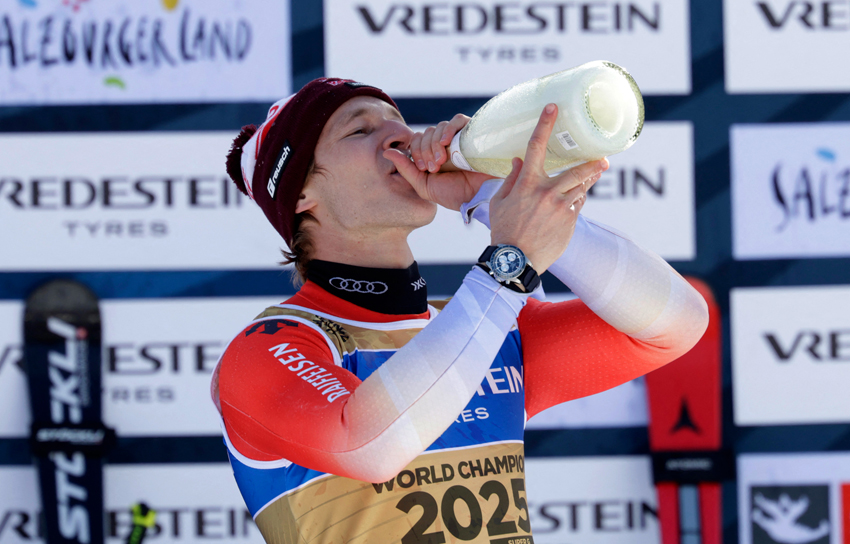
The research confirms that the window is indeed real and critically important for athletes who need to recover quickly, such as those in a stage race or with another hard workout in less than 12 hours. In these scenarios, immediate refueling with a carbohydrate and protein blend significantly improves glycogen replenishment and reduces fatigue compared to delayed intake.
However, for the majority of cyclists who have 24 hours or more until their next key session, the urgency of this window diminishes. The analysis suggests that as long as total daily protein and carbohydrate targets are met, the precise timing of post-ride nutrition becomes less critical for recovery. This finding empowers athletes to focus on overall dietary quality rather than stressing about a tight 30-minute deadline.
Creatine: The Endurance Athlete's Secret Weapon
Long stereotyped as a supplement exclusively for bodybuilders, creatine is now being recognized as a powerful tool for endurance athletes, thanks to a wealth of research validating its wide-ranging benefits. At Ride Revolution, a UK-based coaching company, experts have begun actively recommending creatine monohydrate to their cyclists and triathletes, citing a significant shift in scientific understanding.
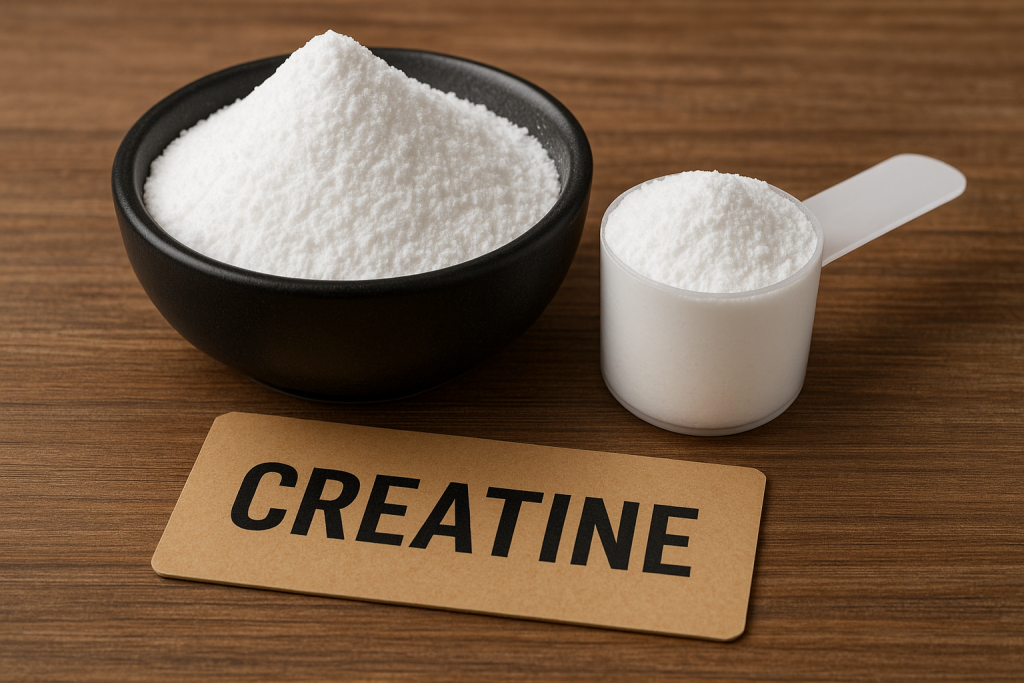
The benefits for cyclists extend far beyond simple power gains:
- Improved Anaerobic Capacity: Creatine boosts the body's ability to perform repeated high-power efforts, essential for sprints, short climbs, and surging out of corners in a criterium.
- Enhanced Recovery and Training Volume: Supplemented athletes report the ability to handle harder training sessions and recover more quickly between them, allowing for greater overall training load without excessive breakdown.
- Cognitive Benefits: One of the most exciting areas of new research is creatine's effect on the brain. It has been shown to combat the mental fatigue and "brain fog" often experienced during heavy training blocks by supporting short-term memory and mental clarity.
- Injury Reduction: Some studies suggest creatine may reduce the incidence of soft tissue injuries and improve rehabilitation outcomes.
The old myth that creatine causes unwanted weight gain has been largely debunked; while some initial water retention occurs, it is intracellular (within the muscle), which aids muscle function, and is not fat. A standard, evidence-based protocol involves an optional loading phase of 20g per day for 5-7 days, followed by an ongoing maintenance dose of 3-5g per day.
Training Lab – Smarter, Stronger, Happier
Effective training is not just about physiological stress; it's about sustainability, enjoyment, and efficiency. This week's research debunks a painful and ineffective training method while providing new frameworks for building strength and, most importantly, for building a training plan you can stick with for the long haul.
The "Big Gear" Myth Busted: Why Your On-Bike "Strength" Work Isn't Working
For years, cyclists have been told to perform low-cadence, high-torque intervals—so-called "Big Gear" training—as a form of on-bike strength work. However, a critical analysis published in July 2025 provides compelling evidence that this method is largely ineffective for building true strength.
The science is clear: to stimulate strength adaptations, muscles need to be subjected to a high level of neuromuscular strain. Traditional resistance training achieves this by loading muscles at over 60% of their maximal dynamic force. Big Gear training, in contrast, operates at less than 50% of this threshold. It simply does not provide a strong enough stimulus to make you stronger. The paper concludes that Big Gear training is not a viable substitute for dedicated, off-bike resistance training and should be reconsidered by coaches and athletes.
For a truly effective approach, cyclists should focus on a year-round strength program of multi-joint exercises. A simple, effective routine for beginners can be performed twice a week and should include foundational movements like :
- Goblet Squats: To build core stability and leg strength.
- Bulgarian Split Squats: To address muscular imbalances and improve single-leg strength.
- Single Leg Hip Thrusts: To activate and strengthen the glutes, a key muscle group for power production.
- Plank and Dead Bug variations: To build a robust core that provides a stable platform for pedaling.
Strength for All: McMaster Study Simplifies Training for Female Cyclists
A new study from McMaster University has delivered a liberating finding for female athletes. The research examined whether muscle-building responses to resistance training were affected by the different phases of the menstrual cycle. The results showed that muscle protein synthesis rates—a key driver of muscle growth—did not change significantly based on hormonal fluctuations throughout the cycle.
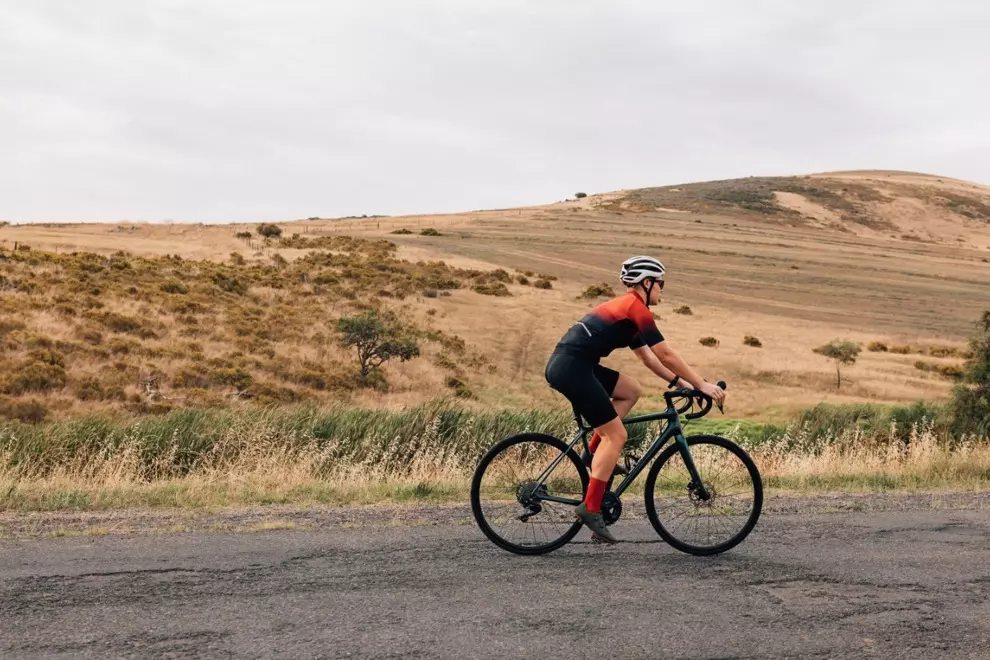
The practical implication is powerful: female cyclists can and should focus on consistency in their strength training without the added complexity and potential stress of trying to align specific workouts with their menstrual cycle. This research simplifies the training process, removing a potential barrier to adherence and empowering women to lift weights whenever it fits their schedule.
Train Your Brain: The Personality-Performance Link
Why do some athletes love the structured solitude of a solo interval session while others thrive on the chaotic energy of a group ride? A fascinating new study from University College London, published in Frontiers in Psychology, suggests the answer lies in our personality traits.
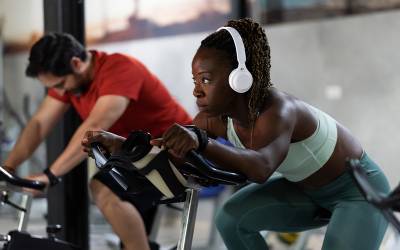

The research found that matching workout styles to personality can significantly increase enjoyment and reduce stress, which are key drivers of long-term adherence. The study provides clear examples:
- Extroverts tend to thrive in high-energy, social settings like group sports, club rides, or competitive Zwift races.
- Individuals scoring high in neuroticism may prefer private, controlled environments, such as solo workouts with structured intervals and breaks, where they can manage the intensity without external pressures.
This provides a new, valuable lens for structuring a training week. Instead of solely focusing on physiological targets, considering psychological fit can lead to a more sustainable and enjoyable relationship with training. An "optimal" plan that an athlete dreads is far less effective than a "good enough" plan they look forward to. This focus on adherence may be the ultimate marginal gain.
Gear Locker – A Flood of Game-Changing Technology
This week marked a watershed moment for cycling technology, with a flurry of releases that will redefine the high-performance gravel market and upgrade the experience for road riders. From Shimano's long-awaited entry into wireless gravel to Pinarello's new off-road superbike, the arms race has officially gone off-road.
Gravel's Wireless Revolution: Shimano GRX Di2 1x12 is Here
The biggest news of the week is the launch of Shimano's first fully wireless gravel-specific groupset, the GRX Di2 1x12. This is a monumental release, representing Shimano's direct challenge to SRAM's long-standing dominance in the electronic 1x gravel space.
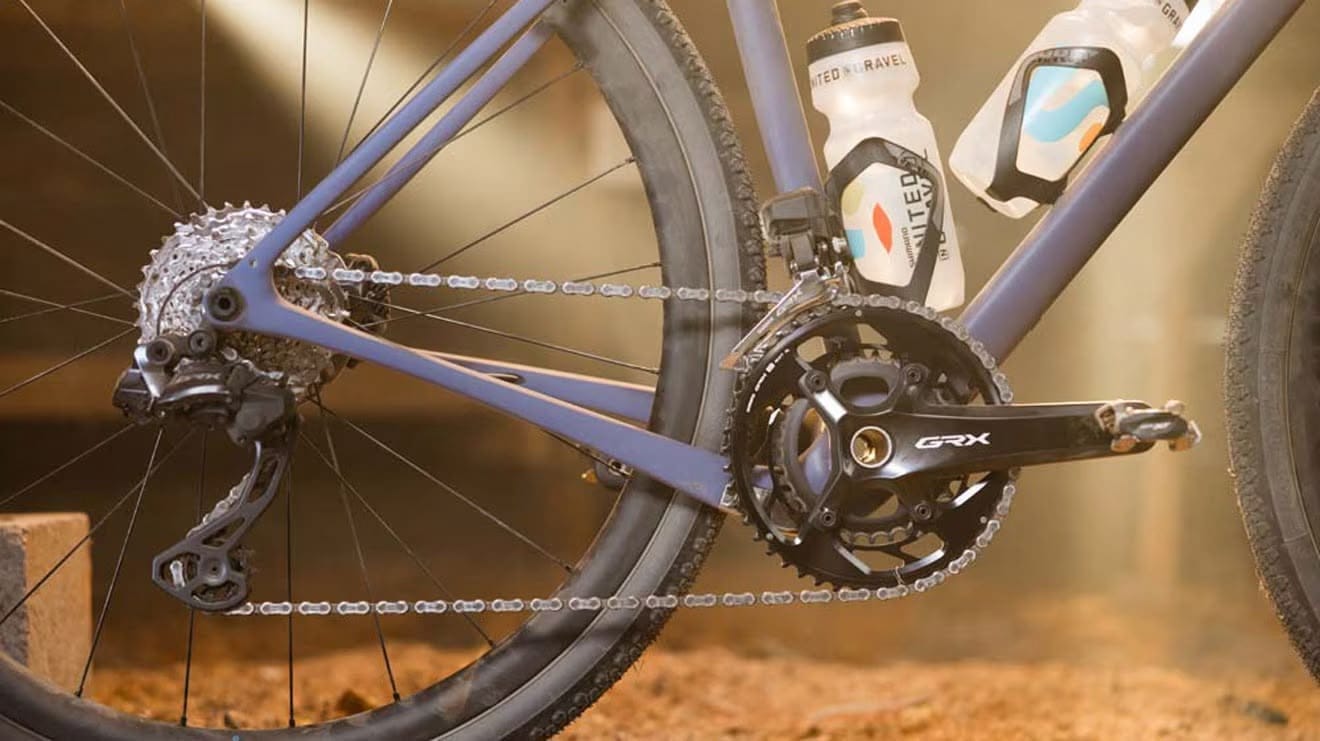
The system's architecture is a significant strategic shift for Shimano in the drop-bar world. It moves away from a central, frame-mounted battery and instead adopts a self-contained, battery-in-derailleur design, much like SRAM's AXS system. The heart of the groupset is a re-badged XT mountain bike derailleur, paired with wireless Di2 shifters and a wide-range 10-51T cassette. This design not only simplifies installation but also embraces the "mullet" setup (road shifters with a mountain bike drivetrain) that has become popular in the gravel and adventure scene for its massive gear range. The system is cross-compatible with Shimano's existing 12-speed wireless road components, offering a high degree of flexibility for custom builds.
|
Feature |
Shimano GRX Di2 1x12 |
SRAM Force XPLR AXS |
|
Derailleur Type |
Wireless (Re-badged XT MTB) |
Wireless (Gravel Specific) |
|
Cassette Range |
10-51T (510%) |
10-44T (440%) |
|
Chainring Options |
40T, 42T |
38T, 40T, 42T, 44T, 46T |
|
Shifter Battery |
Coin Cell (CR1632) |
Coin Cell (CR2032) |
|
Derailleur Battery Life |
700 - 1,000 km (claimed) |
~60 hours ride time (claimed) |
|
System Weight (approx.) |
~2,807 g |
~2,892 g |
|
MSRP (approx.) |
~$2,282 |
~$2,065 |
|
Key Feature |
MTB-derived robustness, cross-compatibility |
Tighter gear steps, integrated power meter options |
Pinarello's New Gravel Weapons: The DOGMA GR and Grevil F
Underscoring the maturation of the gravel market, Pinarello unveiled two new high-performance gravel bikes on July 11th, each targeting a different segment of the off-road world.
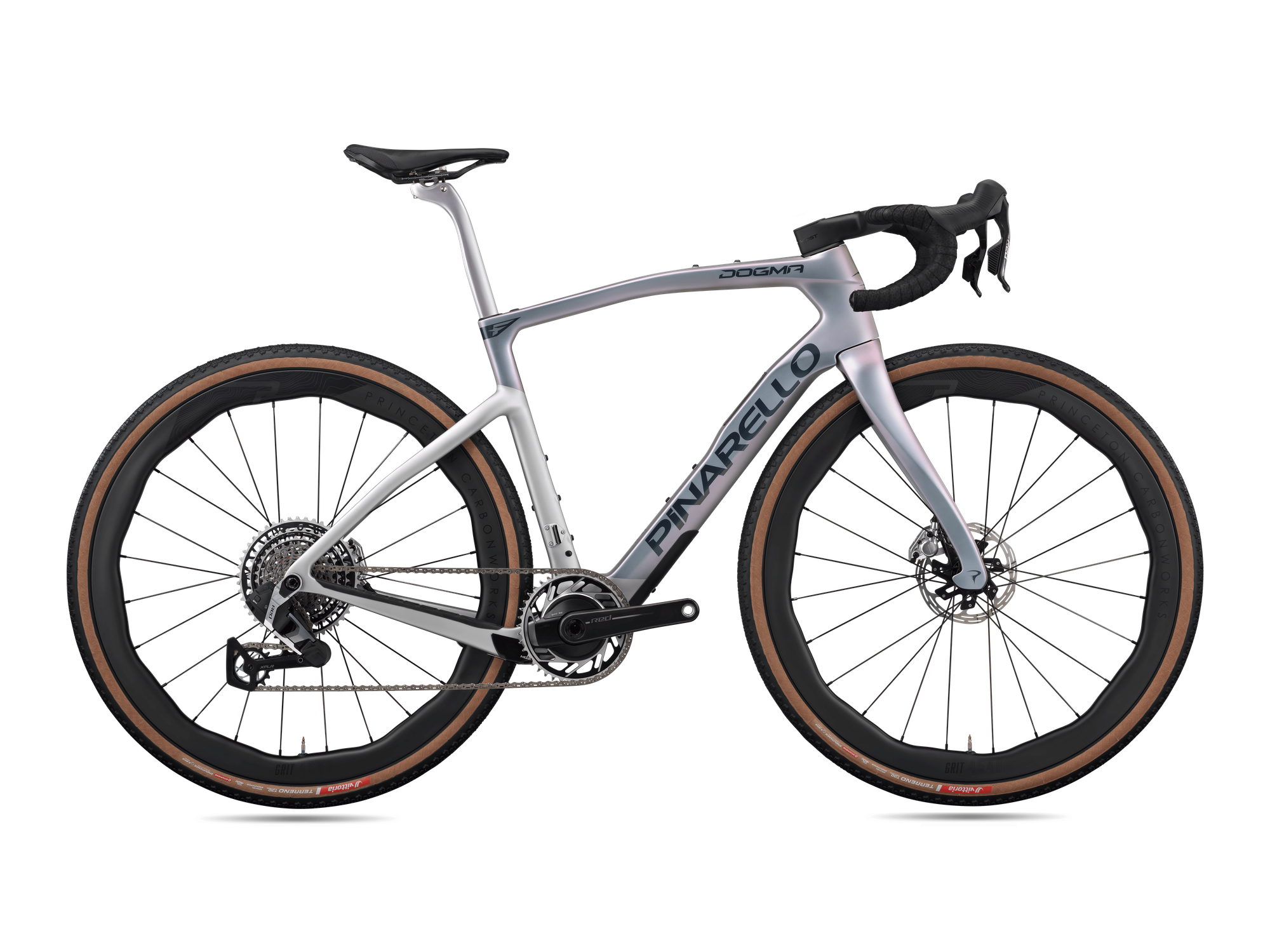
- DOGMA GR: This is Pinarello's flagship, no-compromise gravel racing bike. Described as a "pure racing machine," it borrows aerodynamic cues from the Dogma F road bike and is designed for events under five hours where speed and light weight are paramount. It is the lightest aero gravel bike on the market, signaling its intent for the pointy end of the field.

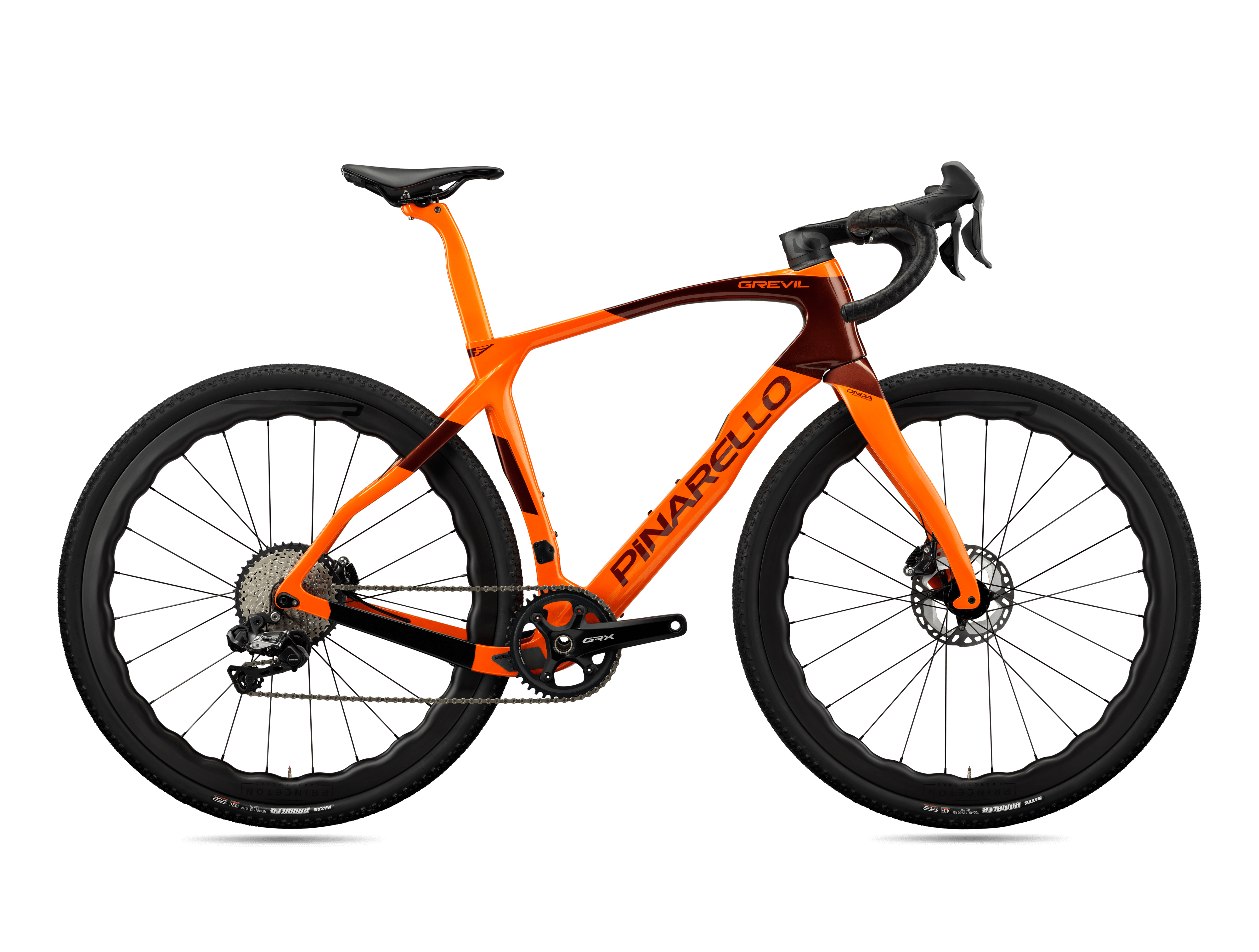
- Grevil F Series: This is the more versatile, adventure-oriented platform. Designed for long-distance solo races, ultra-challenges, and bikepacking, the Grevil F offers broader customization, more mounts for accessories, and clearance for wider tires (up to 50mm). It is a bike built for endurance and exploration rather than pure speed.

The simultaneous release of a top-tier racing groupset from Shimano and a dedicated "superbike" for gravel from Pinarello is a clear indicator that the "pro-ification" of gravel is complete. The discipline, born from a grassroots ethos, now has a fully-fledged professional tier with halo products and WorldTour-level price points to match.
Wahoo's Next-Gen Computers: ELEMNT ROAM 3 & BOLT 3
Wahoo has updated its two most popular GPS computers with the launch of the ELEMNT ROAM 3 and BOLT 3. Both units receive significant hardware upgrades aimed at improving the user experience. The most notable changes are the vibrant new 16-million color TFT screens, a massive increase in internal memory (64GB for the ROAM, 32GB for the BOLT), and longer battery life. The user interface has also been updated with a "Ready-To-Ride" dashboard for quicker pre-ride setup.
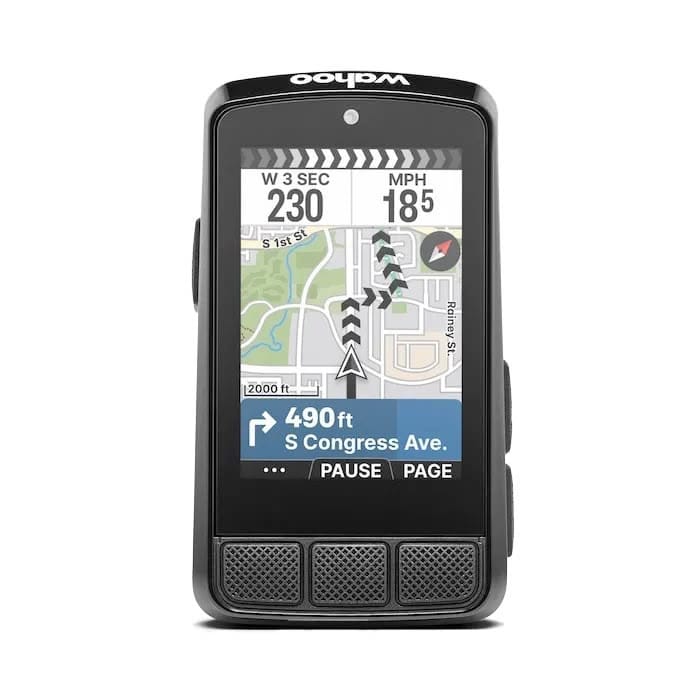

However, the new models controversially remove the signature programmable LED strips from the top and side of the units, a feature many long-time users valued for at-a-glance data on power or heart rate zones.

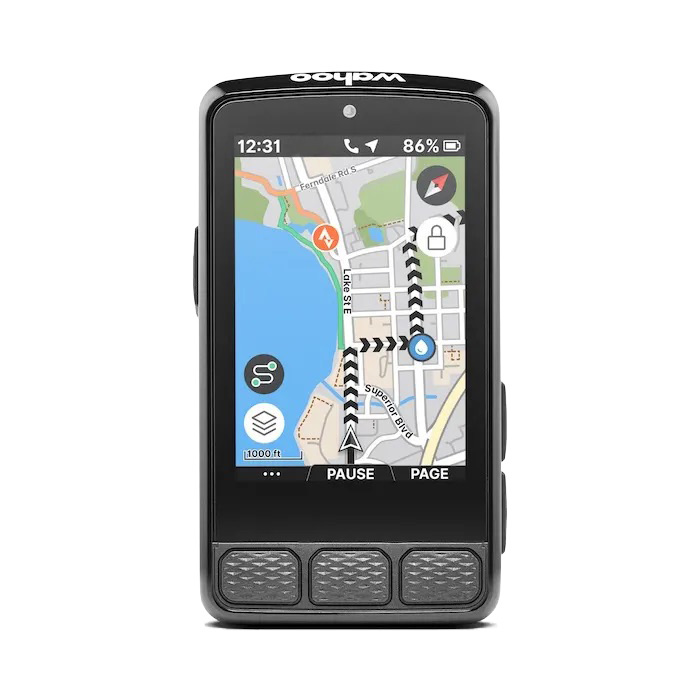
|
Specification |
ELEMNT ROAM 3 |
ELEMNT BOLT 3 |
|
Screen Size & Type |
2.8" TFT Touchscreen |
2.3" TFT |
|
Dimensions |
96mm x 53mm x 24mm |
83mm x 47mm x 24mm |
|
Weight |
109 g |
84 g |
|
Battery Life |
Up to 25 hours |
Up to 20 hours |
|
Storage |
64 GB |
32 GB |
|
Key Navigation Feature |
On-device routing & Voice turn-by-turn |
App-based routing |
|
Price |
$449.99 / €449.99 |
$329.99 / €329.99 |
Kit & Caboodle
- Pas Normal Studios Mechanism 2025: The Danish apparel brand released its iconic Mechanism collection for 2025. It features the brand's signature minimalist aesthetic and aggressive race fit, updated with more advanced, breathable fabrics and new, subtle colorways designed for high performance.
- POC Cytal Mips Helmet: POC has released a more affordable version of its popular Cytal helmet. The new Cytal Mips replaces the carbon fiber wing with polycarbonate and EPS, adding only 20g in weight but reducing the price significantly, making high-end protection more accessible.
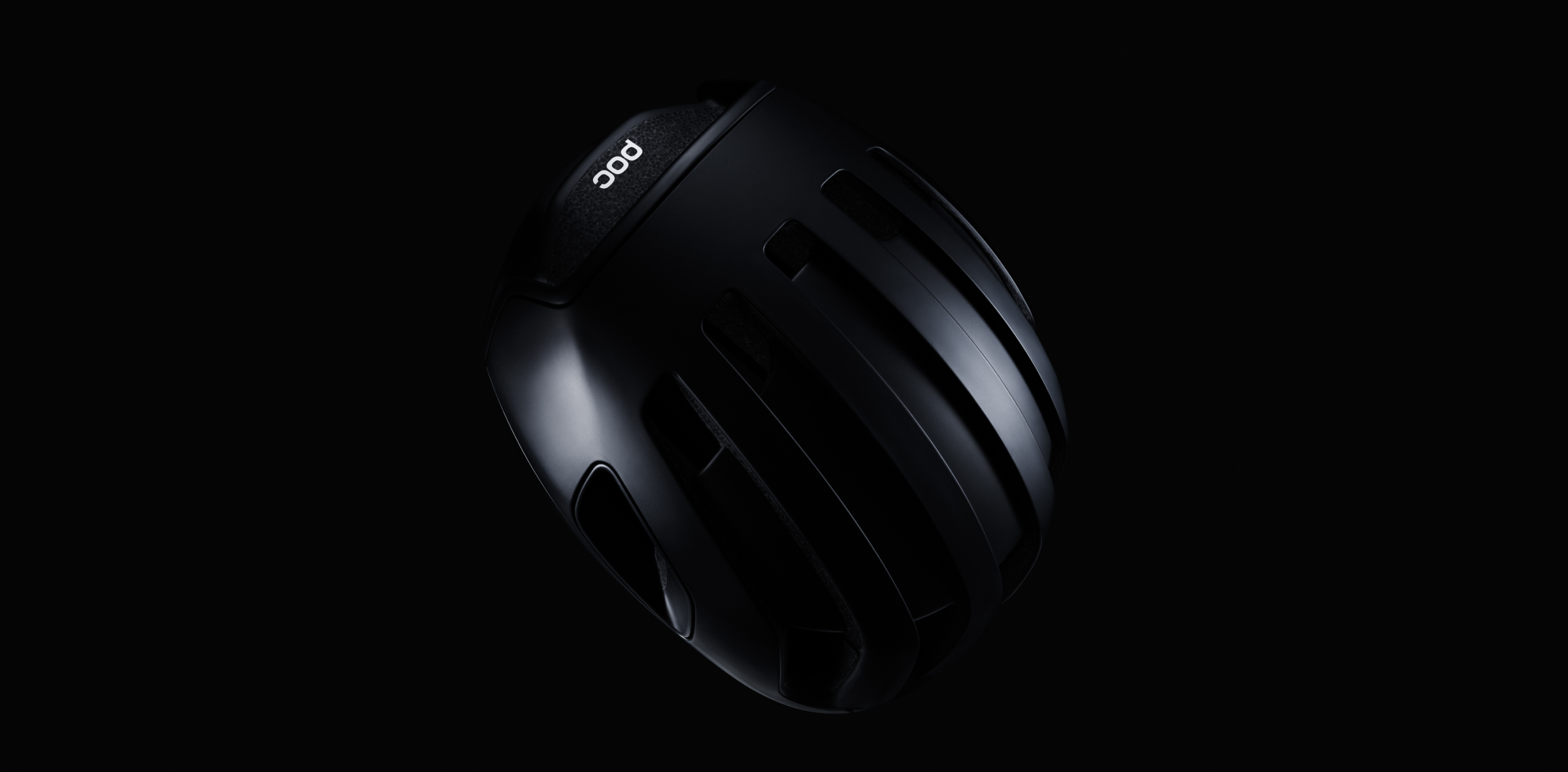
The Inside Line – Virtual Worlds & Real-World Inspiration
Beyond the pro peloton and new product launches, two stories from the wider cycling community caught our attention this week, highlighting shifts in the virtual landscape and the enduring power of human determination.
Zwift Shifts Gears, Cancels Elite World Series
In a significant move that signals a potential strategic pivot, Zwift announced on July 8th that it will not be hosting its flagship Elite Zwift World Series this fall. In an email to elite racers, the company stated that the current level of audience interest and viewership for its top-tier esports events did not justify the substantial investment in broadcast production, prize money, and governance. This decision suggests Zwift may be shifting its focus away from pro-level esports and toward enhancing the experience for its broader community of recreational users and amateur racers.
Inspiration on the Track: Para-Cyclists Prepare for LA 2028
The UCI World Cycling Centre in Aigle, Switzerland, recently hosted a week-long training camp for para-cyclists from Austria, Ireland, Norway, and the United Arab Emirates. The camp provided development riders and experienced athletes with access to world-class velodrome facilities and expert coaching as they build towards the Los Angeles 2028 Paralympic Games. Athletes worked on track-specific skills like starting blocks and rotations, demonstrating the immense dedication and focus required to compete at the highest level of the sport and providing an inspiring reminder of the diverse and determined community that makes up cycling.
Around the World – Weekend Race Results (July 7-14)
A summary of other major professional race results from the past week for the dedicated fan.
|
Race |
Classification |
Winner |
|
Giro d'Italia Women |
2.WWT |
Elisa Longo Borghini |
|
Tour of Austria |
2.1 |
Isaac del Toro |
|
Tour of Magnificent Qinghai |
2.Pro |
Henok Mulubrhan |
|
GP Internacional Torres Vedras |
2.2 |
Alexis Guerin |
|
Ain Bugey Valromey Tour |
2.1 |
Noah Lindholm Møller Andersen |
|
Grote Prijs CHW Beveren |
1.2 |
Katrijn De Clercq |




